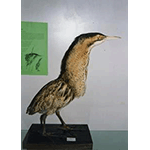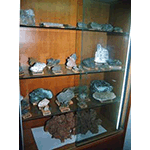Museo Civico di Scienze Naturali e Archeologia della Valdinievole [Valdinievole Civic Museum of Natural Science and Archaeology]
Inaugurated in 1976 in Palazzo Obizzi, the museum displays scientific objects coming from the Museo Civico Magnani, established in the late 19th century to bring together works of art from the suppressed religious institutions and from the zoological collections of the old Pescia Agrarian School. The museum, which was moved to its more spacious current premises in 1989, has been enriched over the years by acquisitions coming from historical-naturalist research over the territory and from private donations.
The specimens are arranged in sections according to the various disciplines. The zoological section includes naturalist stuffed specimens, consisting for the most part of birds of local provenance, collected from the late 19th century to the present (including some exceptional exotic specimens). Particularly interesting is the nineteenth-century donation of naturalist materials collected by Robert Lawley. The palaeontological collection, which displays fossils of vertebrates, invertebrates and plants, both local and national, is continuously incremented by specimens collected in collaboration with the Universities of Florence, Pisa and Camerino, and with cultural associations. The mineralogical collection includes local, national and foreign samples; noteworthy is the Cecchelli Collection of Italian minerals, dating from the early years of the 20th century, and the nineteenth-century Gambarini Collection of rocks taken from the construction site of the Montecatini-Monsummano-Lucca-Pescia Railway.
The museum organises various educational activities, including cycles of conferences on prehistoric man and on palaeontology held in the schools. It also has a hall equipped for the visually impaired.
****************************
Texts by Graziano Magrini
English translation by Catherine Frost
Last update 15/feb/2008





